Microwave Transmittance Technique Using Microstrip Patch Antennas, as a Non-Invasive Tool to Determine Soil Moisture in Rhizoboxes †
Abstract
1. Introduction
2. Materials and Methods
2.1. Vector Network Analyzer (VNA)
2.2. Design of Microstrip Patch Antennas
2.3. Details of Rhizobox Used
2.4. Measurement of Reproducibility and Repeatability
2.5. Calibration Curves
3. Results and Discussion
3.1. Measurement of S21 under Different Experimental Conditions
3.2. Evaluation of Reproducibility and Repeatability of the System Developed
3.3. Influence of Temperature During the Measurements of Volumetric Soil Moisture
3.4. The Calibration Curve and Modeling of Volumetric Soil Moisture θV as a Function of S21
4. Conclusions
Supplementary Materials
Author Contributions
Funding
Acknowledgments
Conflicts of Interest
References
- Fiorani, F.; Schurr, U. Future Scenarios for Plant Phenotyping. In Annual Review of Plant Biology; Annual Reviews Inc.: Palo Alto, CA, USA, 2013; Volume 64, pp. 267–291. [Google Scholar] [CrossRef]
- Qu, W.; Bogena, H.R.; Huisman, J.A.; Vereecken, H. Calibration of a novel low-cost soil water content sensor based on a ring oscillator. Vadose Zone J. 2013, 12. [Google Scholar] [CrossRef]
- Cole, K.S.; Cole, R.H. Dispersion and Absorption in Dielectrics—I Alternating Current Characteristics. J. Chem. Phys. 1941, 9, 341–352. [Google Scholar] [CrossRef]
- Havinga, E.E. The temperature dependence of dielectric constants. J. Phys. Chem. Solids 1961, 18, 253–255. [Google Scholar] [CrossRef]
- Nörtemann, K.; Hilland, J.; Kaatze, U. Dielectric Properties of Aqueous NaCl Solutions at Microwave Frequencies. J. Phys. Chem. A 1997, 101, 6864–6869. [Google Scholar] [CrossRef]
- Bao, Y.; Aggarwal, P.; Robbins, N.E.; Sturrock, C.J.; Thompson, M.C.; Tan, H.Q.; Tham, C.; Duan, L.; Rodriguez, P.L.; Vernoux, T.; et al. Plant roots use a patterning mechanism to position lateral root branches toward available water. PNAS 2014, 111, 9319–9324. [Google Scholar] [CrossRef] [PubMed]
- Mojid, M.A.; Cho, H. Evaluation of the time-domain reflectometry (TDR)-measured composite dielectric constant of root-mixed soils for estimating soil-water content and root density. J. Hydrol. 2004, 295, 263–275. [Google Scholar] [CrossRef]
- Paul, L.C.; Hosain, M.S.; Prio, M.H.; Morshed, M.; Sarkar, A.K. The Effect of Changing Substrate Material and Thickness on the Performance of Inset Feed Microstrip Patch Antenna. Am. J. Network Commun. 2015, 4, 54–58. [Google Scholar] [CrossRef]
- Toba, T.; Kitagawa, A. Wireless Moisture Sensor Using a Microstrip Antenna. J. Sens. 2011, 2011, 827969. [Google Scholar] [CrossRef]
- Sarabandi, K.; Li, E.S. Microstrip Ring Resonator for Soil Moisture Measurements. IEEE Trans. Geosci. Remote Sens. 1997, 35, 1223–1231. [Google Scholar] [CrossRef]
- Pellicer, A.; Bravo, M.D.C. Near-infrared spectroscopy: A methodology-focused review. Semin. Fetal Neonatal Med. 2011, 16, 42–49. [Google Scholar] [CrossRef] [PubMed]
- Measured Quantities. Available online: http://labrf.av.it.pt/Data/Manuais&Tutoriais/40b-VNA-ZVB20/CD/documents/Help_Files/WebHelp_ZVT/System_Overview/Measurement_Parameters/S-Parameters.htm (accessed on 20 November 2014).
- Tsang, L.; Kong, J.A.; Ding, K.-H. Scattering of Electromagnetic Waves: Theories and Applications; In Wiley Series in Remote Sensing and Image Processing; John Wiley & Sons: New York, NY, USA, 2004; Volume 47, p. 445. [Google Scholar]
- Cataldo, A.; Monti, G.; De Benedetto, E.; Cannazza, G.; Tarricone, L. A noninvasive resonance-based method for moisture content evaluation through microstrip antennas. IEEE Trans. Instrum. Meas. 2009, 58, 1420–1426. [Google Scholar] [CrossRef]
- Rosenbaum, U.; Huisman, J.A.; Vrba, J.; Vereecken, H.; Bogena, H.R. Correction of Temperature and Electrical Conductivity Effects on Dielectric Permittivity Measurements with ECH2O Sensors. Vadose Zone J. 2011, 10, 582–593. [Google Scholar] [CrossRef]
- Schmugge, T.J.; Jackson, T.J. Survey of methods for soil moisture determination. Water Resour. Res. 1980, 16, 961–979. [Google Scholar] [CrossRef]
- Chaplin, M. Water and Microwaves. Available online: http://www1.lsbu.ac.uk/water/microwave_water.html (accessed on 10 February 2019).
- Wagner, N.; Emmerich, K.; Bonitz, F.; Kupfer, K. Experimental Investigations on the Frequency- and Temperature-Dependent Dielectric Material Properties of Soil. IEEE Trans. Geosci. Remote Sens. 2011, 49, 2518–2530. [Google Scholar] [CrossRef]
- Gong, Y.; Cao, Q.; Zongjia Sun, Z. The effects of soil bulk density, clay content and temperature on soil water content measurement using time-domain reflectometry. Hydrol. Processes 2003, 17, 3601–3614. [Google Scholar] [CrossRef]
- Von Hippel, A.R. Dielectric Materials and Applications; The Technology Press of M.I.T.: Cambridge, MA, USA; John Wiley: New York, NY, USA, 1954. [Google Scholar]
- Schmugge, T.J. Remote Sensing of Soil Moisture: Recent Advances. IEEE Trans. Geosci. Remote Sens. 1983, 21, 336–344. [Google Scholar] [CrossRef]
- Hallikainen, M.T.; Ulaby, F.T.; Dobson, M.C.; El-Rayes, M.A.; Wu, L.-K. Microwave Dielectric Behavior of Wet Soil-Part 1: Empirical Models and Experimental Observations. IEEE Trans. Geosci. Remote Sens. 1985, GE-23, 25–34. [Google Scholar] [CrossRef]
- Vaz, C.M.P.; Hopmans, J.W.; Macedo, A.; Bassoi, L.H.; Wildenschild, D. Soil Water Retention Measurements Using a Combined Tensiometer-Coiled Time Domain Reflectometry Probe. Soil Sci. Soc. Am. J. 2002, 66, 1752–1759. [Google Scholar] [CrossRef]
- De Willigen, P.; Heinen, M.; van Noordwijk, M. Roots Partially in Contact with Soil: Analytical Solutions and Approximation in Models of Nutrient and Water Uptake. Vadose Zone J. 2017, 17, 1–16. [Google Scholar] [CrossRef]
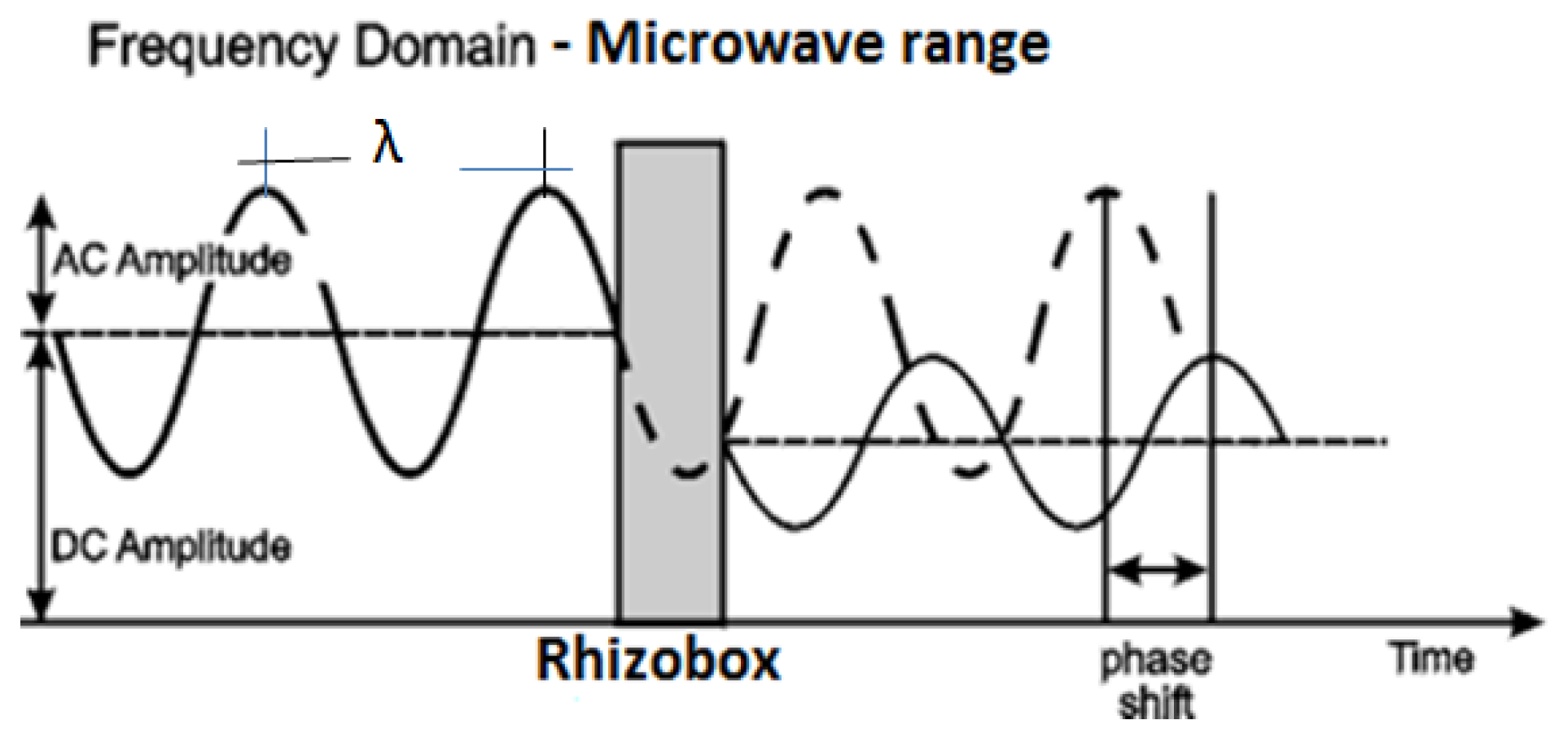
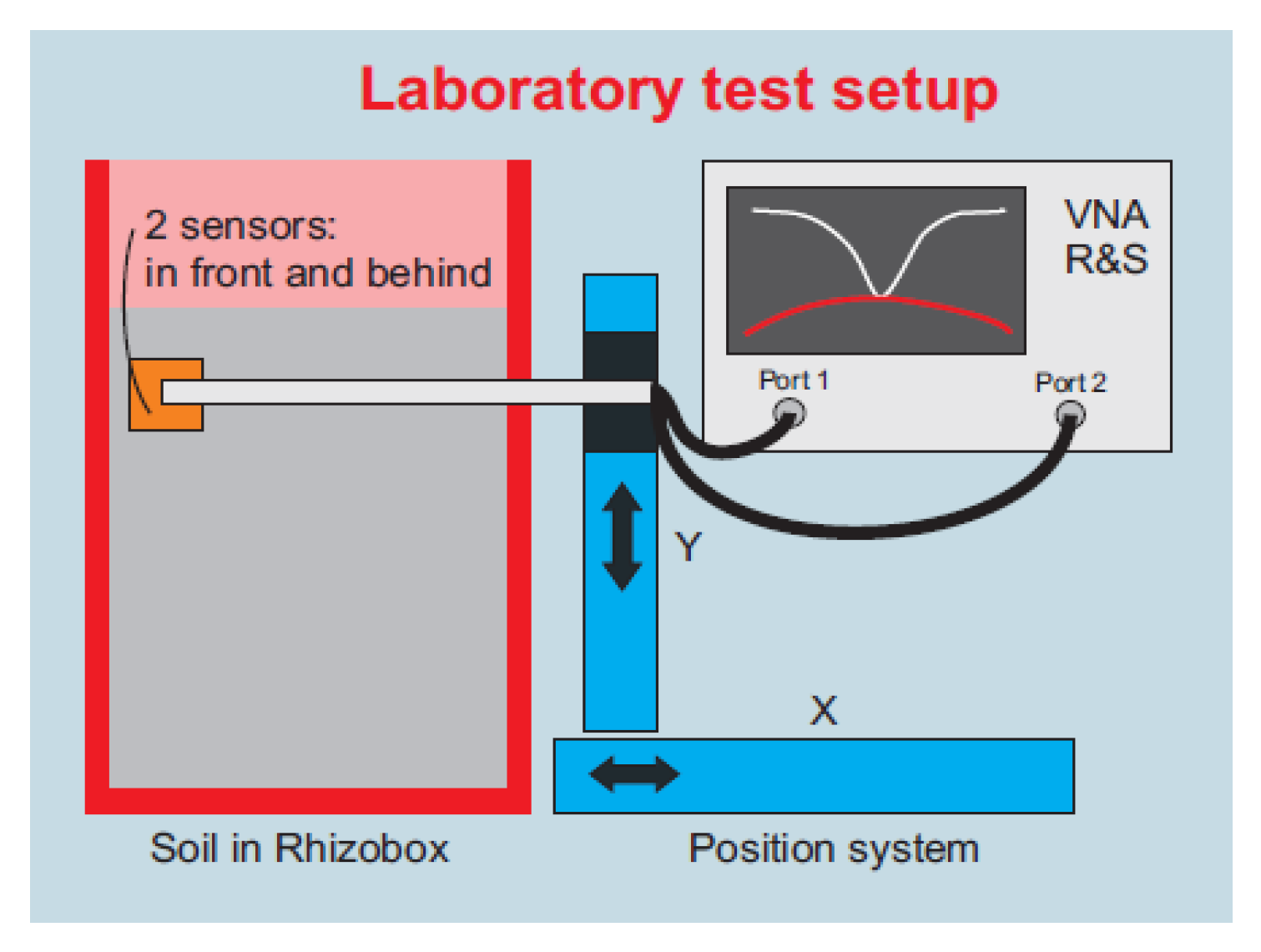

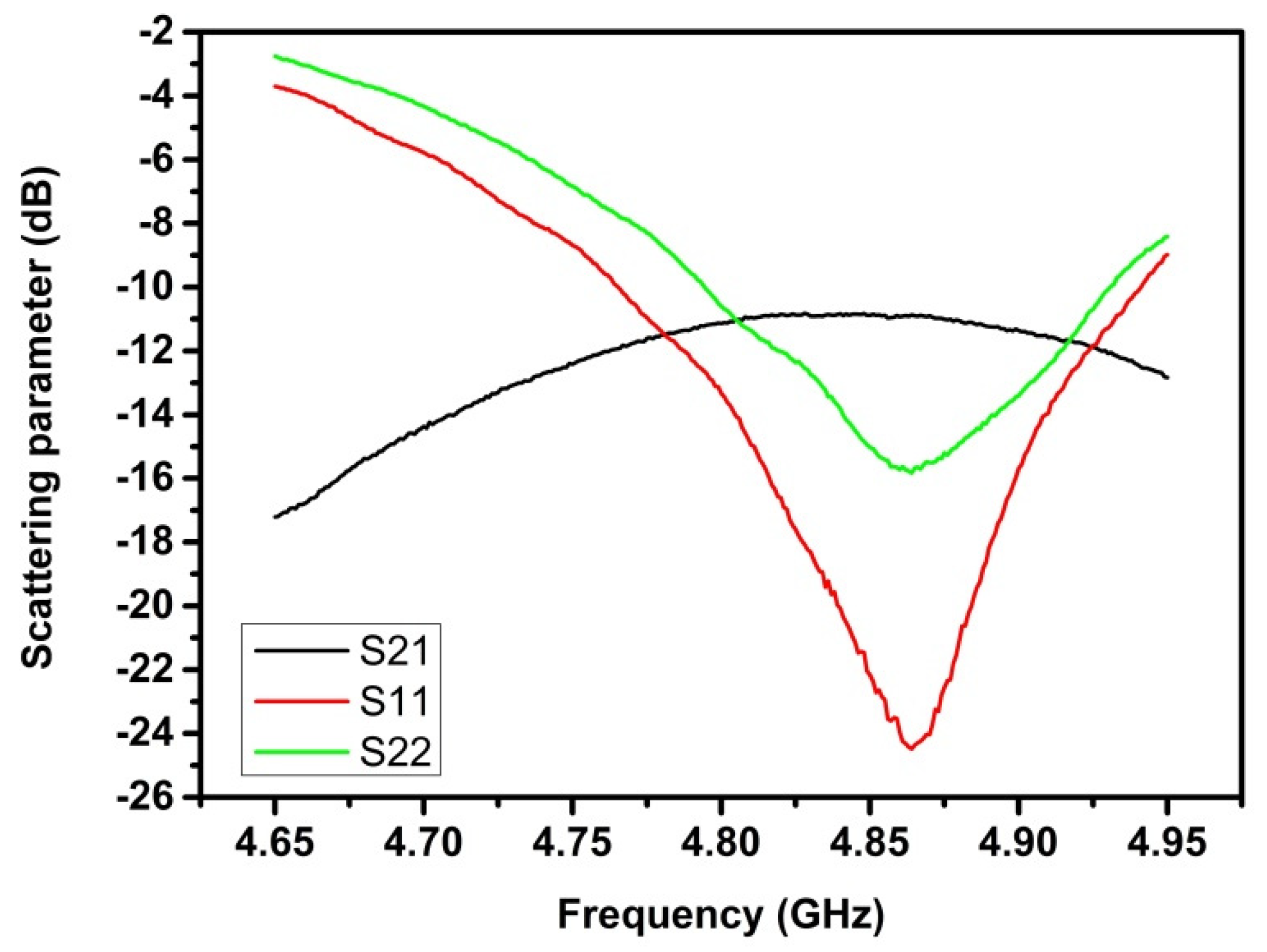

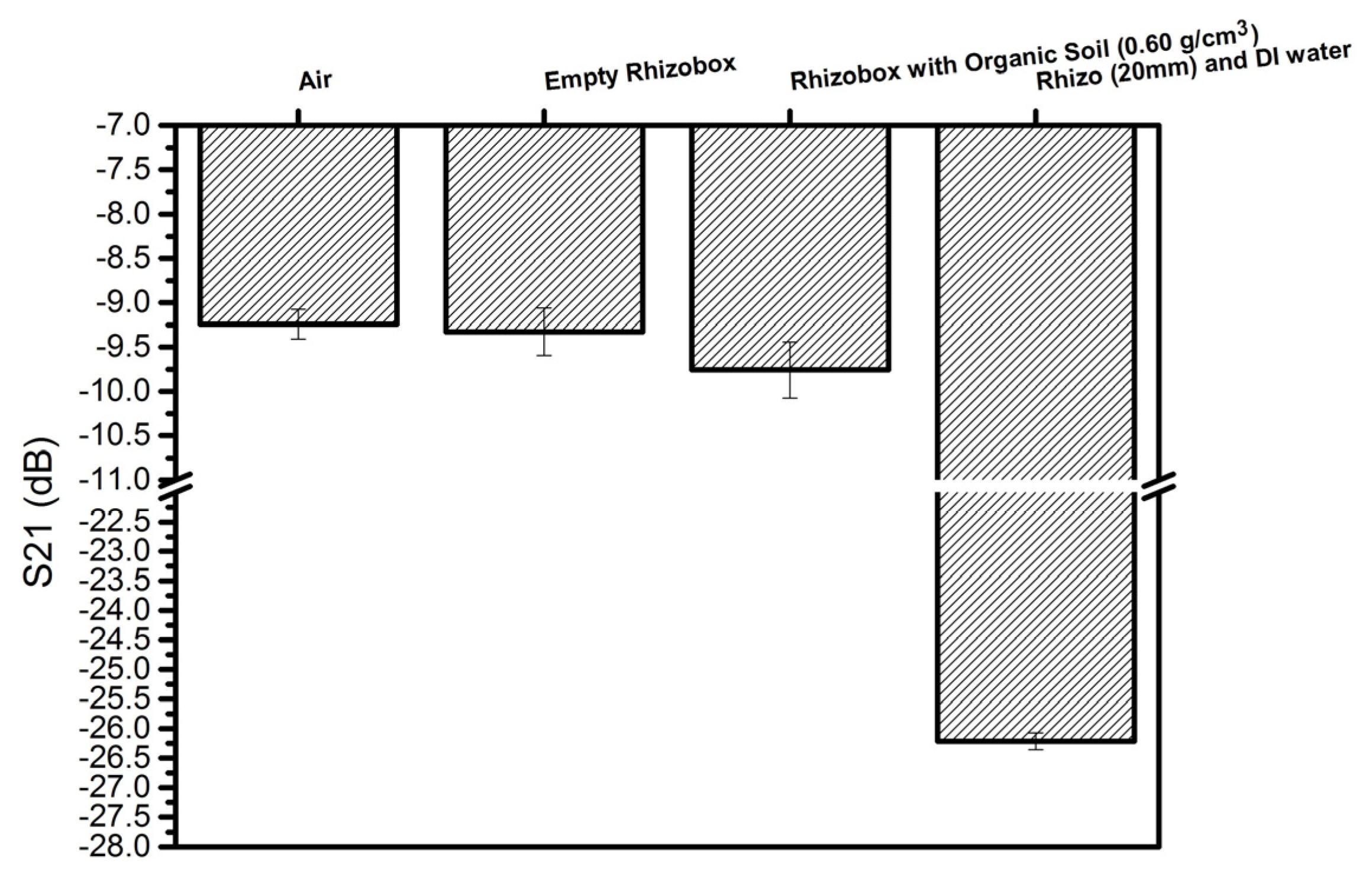

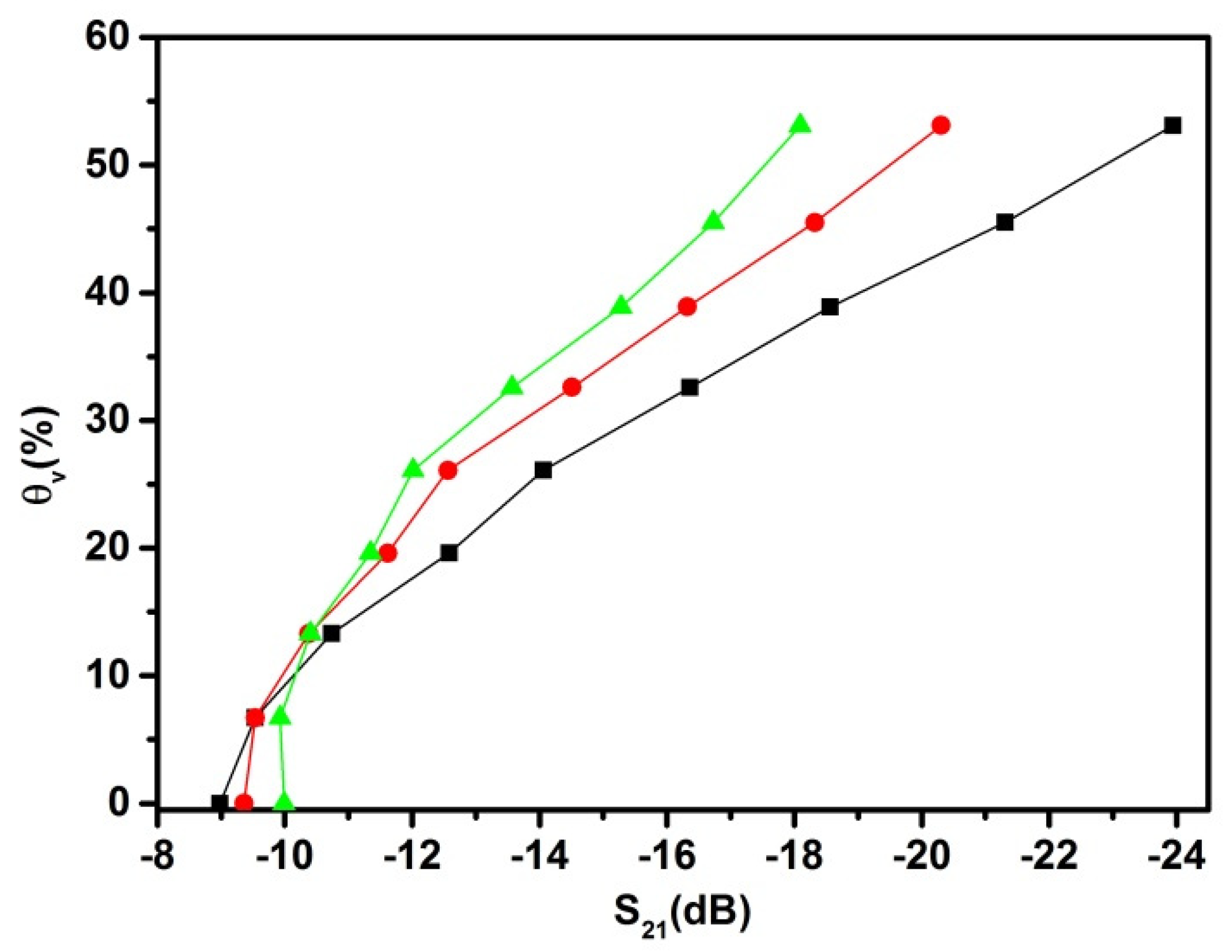
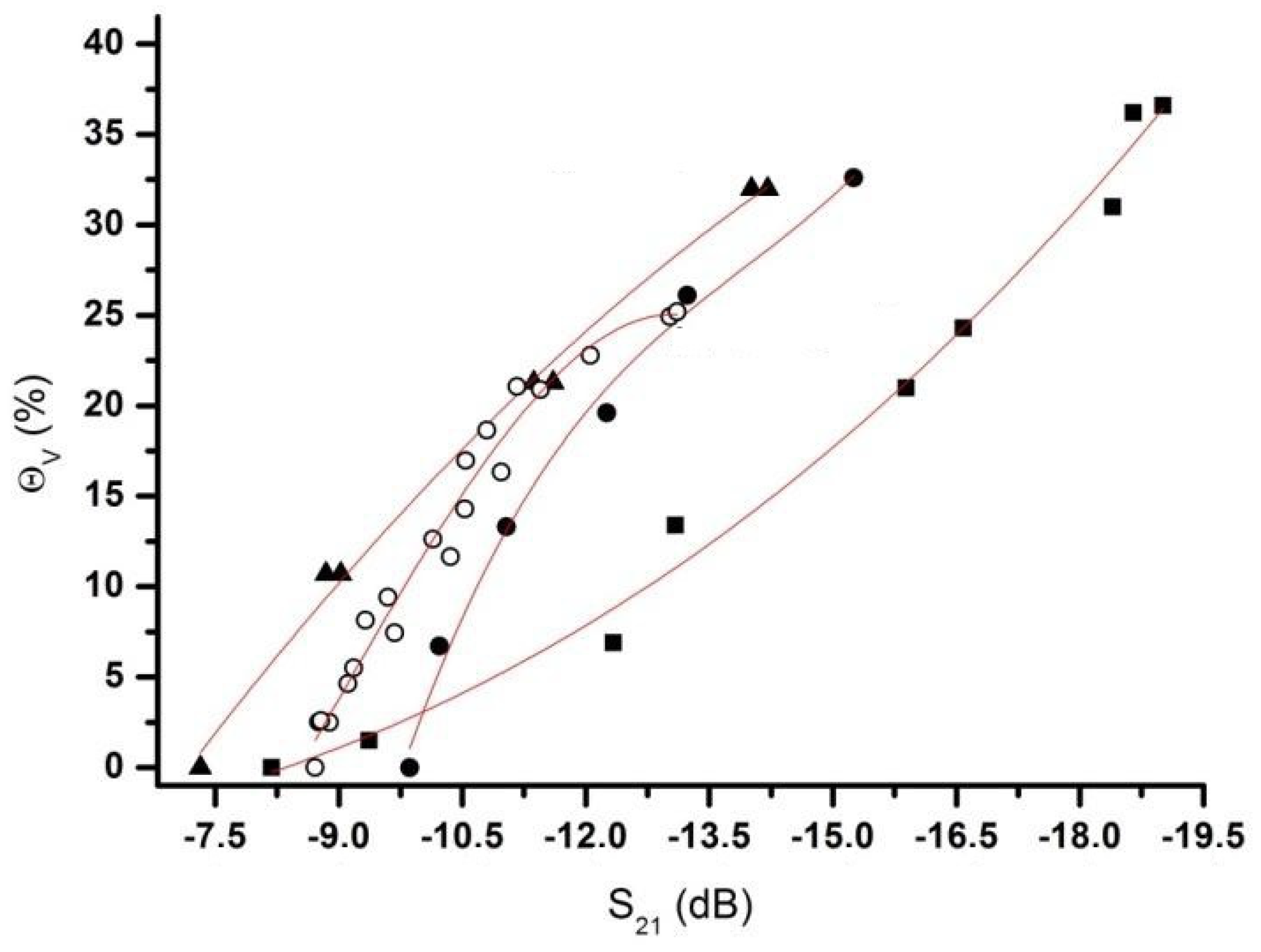
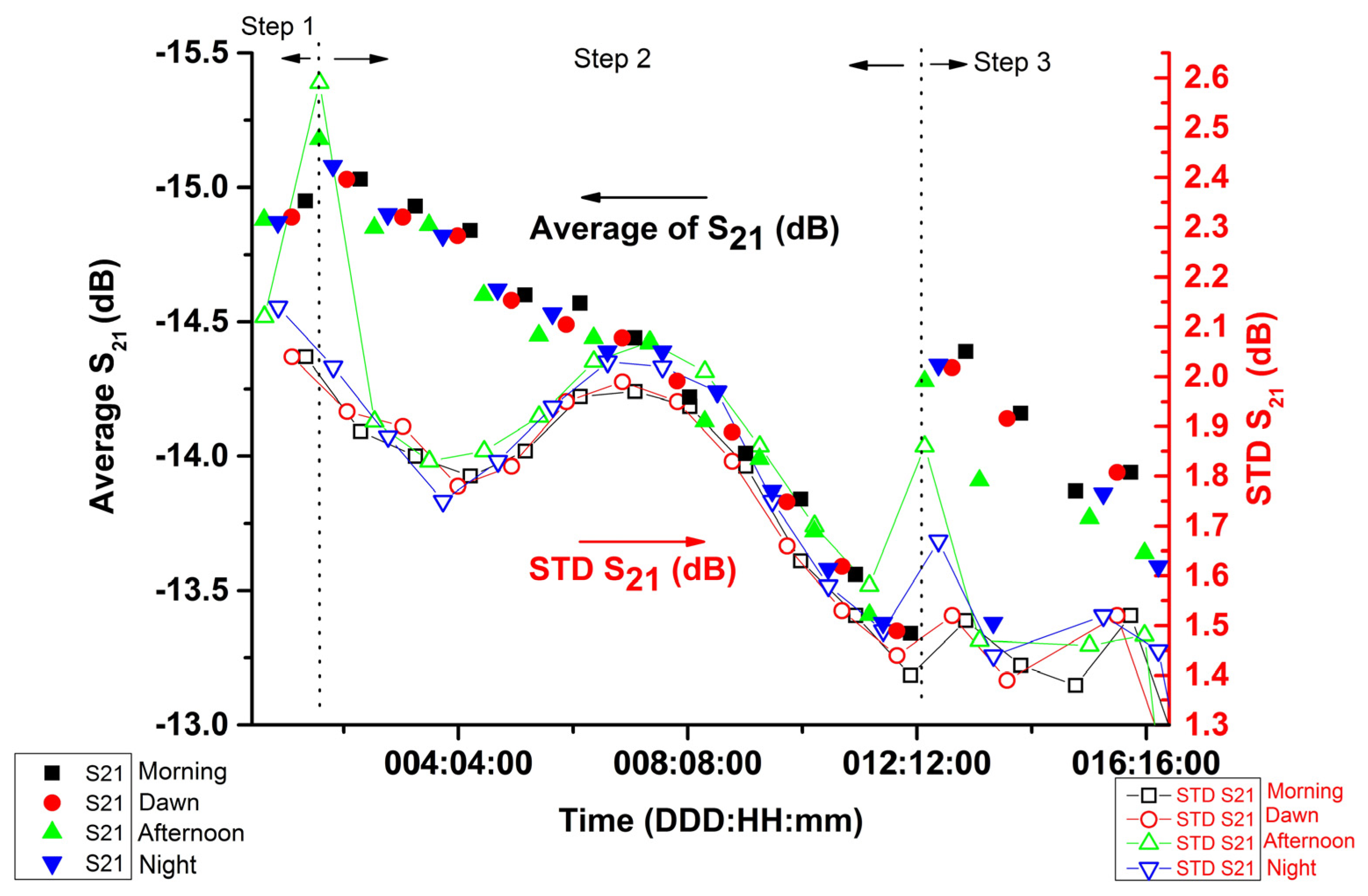
| Medium | Volume Fraction in Deionized Water (DI Water) | ||||
|---|---|---|---|---|---|
| (cm3/cm3) | (-) | (-) | (-) | (-) | |
| Dioxane | 0.90 | 5.76 | 0.97 | 0.168 | 5.84 |
| i-C3E1 | 1.00 | 6.71 | 2.87 | 0.428 | 7.30 |
| i-C3E1 | 0.92 | 7.91 | 4.82 | 0.609 | 9.26 |
| i-C3E1 | 0.86 | 9.51 | 6.57 | 0.691 | 11.56 |
| i-C3E1 | 0.80 | 11.22 | 8.36 | 0.745 | 13.99 |
| i-C3E1 | 0.73 | 14.03 | 10.84 | 0.773 | 17.73 |
| i-C3E1 | 0.68 | 16.42 | 12.53 | 0.763 | 20.66 |
| Samples | Clay | Sand | Silt | N | C | C/N | Fe | |
|---|---|---|---|---|---|---|---|---|
| % | % | % | % | % | mg/g | g/cm3 | ||
| Nullerde (Einheitserde Typ 0) | 35.0 | - | - | 0.45 | 22.1 | 48.9 | 30.5 | 0.28 |
| Dachstau den substrat Somi 513 (Kaktus soil) | 19.1 | - | 23.1 | 0.21 | 12.5 | 43.0 | 183 | 0.59 |
| Dystrophic Red Latosol (Oxisol)—Cerrado Soil (Go/BR) | 58.2 | 18.4 | 23.4 | - | 18.5 | - | 120 | 1.19 |
| Glass Beads * (210–250 µm) | 1.54 |
| n0 | Samples | Equation | * R2 |
|---|---|---|---|
| (3) | Cerrado Soil ρss = 1.19 g/cm3 | Θv(%) = −0.00258 * S21(dB)3 + 0.07924 * S21(dB)2 + 0.27515 * S21(dB) − 4.72555 | 0.9834 |
| (4) | Null Erde ρss = 0.28 g/cm3 | Θv(%) = −0.18679 * S21(dB)3 − 7.79899 * S21(dB)2 − 112.0218 * S21(dB) − 524.374 | 0.9804 |
| (5) | Kaktus Soil ρss = 0.59 g/cm3 | Θv(%) = 0.1555 * S21(dB)3 + 4.16601 * × S21(dB)2 + 29.24777 * S21(dB) + 42.96299 | 0.9725 |
| (6) | Glass Beads ρss = 1.54 g/cm3 | Θv(%) = −0.19723 * S21(dB)2 − 8.78181 * S21(dB) − 52.87515 | 0.9923 |
© 2020 by the authors. Licensee MDPI, Basel, Switzerland. This article is an open access article distributed under the terms and conditions of the Creative Commons Attribution (CC BY) license (http://creativecommons.org/licenses/by/4.0/).
Share and Cite
Herrmann, P.S.d.P.; Sydoruk, V.; Marques Porto, F.N. Microwave Transmittance Technique Using Microstrip Patch Antennas, as a Non-Invasive Tool to Determine Soil Moisture in Rhizoboxes. Sensors 2020, 20, 1166. https://doi.org/10.3390/s20041166
Herrmann PSdP, Sydoruk V, Marques Porto FN. Microwave Transmittance Technique Using Microstrip Patch Antennas, as a Non-Invasive Tool to Determine Soil Moisture in Rhizoboxes. Sensors. 2020; 20(4):1166. https://doi.org/10.3390/s20041166
Chicago/Turabian StyleHerrmann, Paulo Sergio de Paula, Viktor Sydoruk, and Felipe Nieves Marques Porto. 2020. "Microwave Transmittance Technique Using Microstrip Patch Antennas, as a Non-Invasive Tool to Determine Soil Moisture in Rhizoboxes" Sensors 20, no. 4: 1166. https://doi.org/10.3390/s20041166
APA StyleHerrmann, P. S. d. P., Sydoruk, V., & Marques Porto, F. N. (2020). Microwave Transmittance Technique Using Microstrip Patch Antennas, as a Non-Invasive Tool to Determine Soil Moisture in Rhizoboxes. Sensors, 20(4), 1166. https://doi.org/10.3390/s20041166





